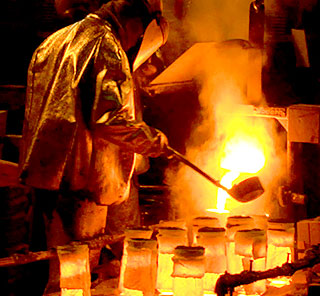Hardness of Austenitic Stainless Steels
The “hardness” of these Alloys as perceived by the machinist is determined by several factors (type of tool used, cutting speeds and feeds, coolant, etc.) in addition to several metallurgical factors.
The metallurgical factors include hardness (as measured by a hardness test), inclusion content (including type, size, and number), metallurgical structure (which phases are present), the “grain size”, and the casting “skin.” Of these, the most important ones are hardness and inclusion content.
Some inclusions increase the machining difficulty. These include sand and ceramic inclusions, oxide inclusions of various types, nitrides, carbides, etc. Their principal effect is to increase tool wear. Other inclusions improve machinability. These include sulfides and selenides, thus the addition of sulfur and selenium to make the so called “free-machining” steels. The principal effect of these inclusions is to cause the chips to break thereby allowing higher speeds.
The hardness of the metal (as measured by a hardness test) is determined primarily by the amount of ferrite which is present in the microstructure, and secondarily by composition and heat treatment condition. The composition effects are primarily due to the presence of interstitial elements. Interstitial elements are those which have small atoms and are generally found between the larger Cr, Ni, and Fe atoms in the crystal lattice. All other factors held constant, the higher the level of interstitial elements (C, N, etc.), the higher the hardness.
The effect of heat treatment is small and may not be measurable. It involves the higher residual stresses created when parts are water quenched. Parts which are air cooled or gas quenched as in vacuum heat treating have less residual stress and therefore would be expected to have slightly lower hardness.
The primary determinant of hardness in these Alloys is the ferrite content. Ferrite is harder (and stronger) than austenite*. The amount of ferrite which is present in a given casting depends primarily on the composition, and secondarily on the section thickness and the heat treatment the part received. Thicker sections generally have higher ferrite contents than thinner sections. The heat treatment effect is due to the temperature used; the precise effect is often not predictable since it also depends on the composition.
Some elements promote the formation of ferrite; others promote austenite. The relative amounts of these elements have a major effect on the ferrite content. Elements such as chromium, molybdenum, silicon, and columbium (niobium) promote ferrite. The higher their total content, the higher the ferrite content. Conversely, some elements (nickel, manganese, carbon, nitrogen, etc.) promote the formation of austenite: the higher their combined content, the less ferrite which is formed.
These elements are not equal in their power to affect the ferrite content. ASTM A800 gives multipliers which are used to adjust the concentrations for estimating the ferrite level. This specification is based on research conducted by the steel Founders’ Society of America. Other researchers have found different “multipliers.” The difference between the several researchers’ results is likely due to the casting methods used, the casting section sizes, and the Alloy compositions studied. For example, the Welding Research Council has reported that Manganese has no effect at all!
Ferrite content can be determined by any of several methods. Metallography, calculation from chemical composition (as is done in A800), and correction from magnetic property measurements are the most common. Metallographic methods fail when the structure is very fine (as in welds, thus the use of ferrite number in the welding industry).
Magnetic property methods depend on the ferrite always having the same magnetic properties – not true when the composition and morphology of the ferrite vary, which they do! Many magnetic property measurements, including the FeritScope, are affected by the surface finish.
Calculation from the composition depends on the accuracy of the analysis. Laboratories do not agree on the exact composition of a given sample, thus the scatter band in A800.
In summary, the “machining hardness” is a complex function of many factors, all of which vary from heat to heat, pour to pour, casting to casting, and location to location within a casting. Controlling all these factors presents a challenge to foundries and their customers.
* Ferrite and austenite are different crystalline phases of Stainless steel, much like diamond and graphite are different crystalline phases of carbon. The presence of ferrite is considered beneficial in many applications and is proven beneficial to casting and welding operations. It is detrimental to impact toughness at low temperatures and after exposure to elevated temperatures. Ferrite is magnetic and is therefore undesirable where the parts must be non-magnetic.

